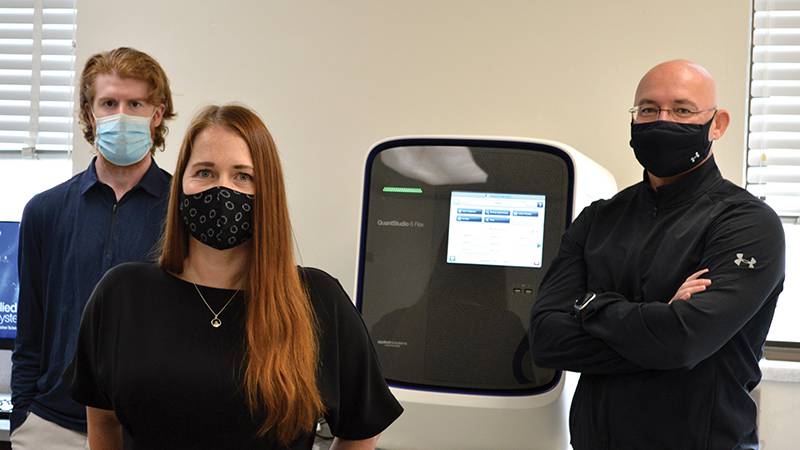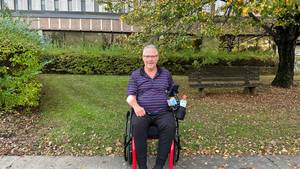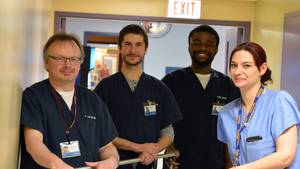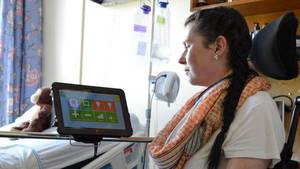Organ and tissue transplants are complex procedures with many moving parts. Ensuring donor-recipient compatibility is an essential component of each procedure and, as with everything related to transplants, time is of the essence.
Since June 2021, the Human Leukocyte Antigen (HLA) lab at the QEII Health Sciences Centre has been using new technology for HLA genotyping of potential donors.
“This has really reduced our turnaround time,” says HLA Typing Laboratory assistant director Dr. Anna Greenshields. “We’re able to get a donor’s HLA typing to our transplant team much faster.”
HLA typing reveals which HLA genes are expressed by individual donors and recipients and is essential in determining organ compatibility. HLAs are proteins on the surface of cells that help our immune system recognize and destroy infected or abnormal cells.
“HLA genes are the most polymorphic — or most different among individuals — genes that humans have,” says Dr. Greenshields.
People who have had a previous transplant or blood transfusion, as well as women who have been pregnant, are exposed to HLA that is different from their own and can form antibodies that target these non-self proteins. If an individual develops antibodies to HLA, it is important to ensure that any transplant they receive comes from a donor that does not have HLA these antibodies could attack.
“Depending on their medical history, a recipient could be incompatible with 99 per cent of the donor population,” she says.
This new technology, which is known as real-time PCR, uses sequence-specific primers and GFP chemistry to detect the amplification of target DNA sequences.
“It used to take about two-and-a-half hours of hands-on work to HLA type a donor,” Dr. Greenshields says. “This has cut that down by about 90 per cent.”
The previous HLA genotyping procedure is still in daily use and is efficient for processing larger volumes all at once, notes HLA Typing Laboratory medical director Dr. Robert Liwski.
“But if you need to do just one test, and you need it done quickly, then the real-time technology is far superior.”
As the only transplant centre east of Quebec, the QEII serves the entire Atlantic region, with potential recipients waiting for organs in all four provinces. When an organ donation becomes available, an elaborate series of events is put in motion, with intricate logistics involving testing, transportation, scheduling and personnel.
“If the donor is on life support, the longer the testing takes, the greater the potential for damage to the organ, because the donor is not in a normal physiological condition,” says Dr. Liwski.
Dr. Liwski says HLA genotyping is used to prioritize recipients for organ donation as it determines compatibility.
“The better we can match donors and recipients, the better the outcome. There is a shortage of donors, so when we find a recipient who is a close match, we can prioritize that patient to receive a transplant,” he says.
Several years ago, Dr. Liwski and his team developed a protocol to reduce the time needed for crossmatch, the final antibody test used to determine donor/recipient compatibility, where laboratory technologists combine patient serum with donor cells to screen for antibodies that could harm the donor organ.
This, combined with the real-time PCR technology, can reduce the entire work-up time from 12 or 13 hours to as low as six. These time savings will now become even more significant as Nova Scotia adopts “deemed consent” for organ donation and increases the number of organ donors.
QEII Blood Transfusion Services medical director Dr. Jason Quinn says this new technology can also be used for blood cell genotyping for transfusions.
“It’s not that common to have genetic testing expertise in blood transfusion,” he says. “It’s not typically part of the field, but it offers numerous benefits to patients undergoing a blood transfusion.”
Similar to patients who develop HLA antibodies, people who’ve had a previous transfusion or have been pregnant can develop antibodies directed against red blood cells, creating problems with transfusions. This can put them at risk for a hemolytic transfusion reaction. A hemolytic transfusion reaction might be mild, but it could also be severe or even life-threatening.
In certain cases, genotyping can be used to find matches between donor red cells and recipients. The current procedure for patients who need genotyping to receive compatible blood is to send samples to Canadian Blood Services’ reference lab, which can provide genetic testing.
“It can take a few weeks to get the results back, but the patient might need a transfusion in the next few hours or even minutes,” Dr. Quinn says. “Now we will be able to have results within hours, which will greatly improve the safety and quality in some of our complicated transfusion cases.”







